
“Honey, I Think We Have a Problem”
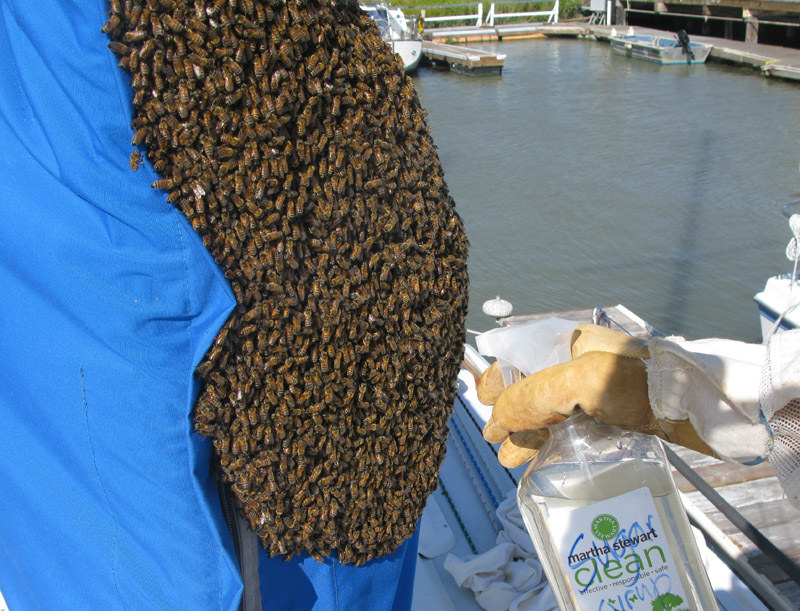
It’s not uncommon for sailors to come down to their boat after a prolonged absence only to find a bird’s nest tucked into the main — usually after raising the sail. But imagine being greeted by several thousand bees. That’s just what happened last week at Vallejo YC when Dave Nadolne’s Newport 30 Windsome Winch became the new royal digs for her majesty, Queen Bee.
When a swarm of bees attached itself to Nadolne’s main last Wednesday, member Mary Kraybill knew just who to call to take care of the situation: her sister and amateur apiarist Deborah Morrison. "I’m an avid gardener and already had two hives," says Morrison. "Now I have three!"
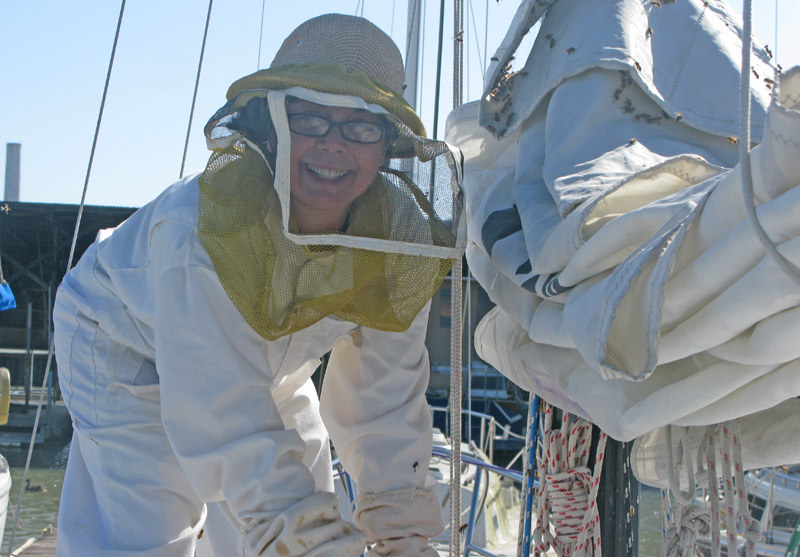
On Friday, Morrison and Kraybill suited up and began the gentle process of gathering the swarm. "First, I sprayed them down with sugar water," explained Morrison. "They’d been there for a few days without eating because they were guarding their queen, so they were hungry — plus the sticky water weighs down their wings." When that was done, the sisters carefully swept the bees into a "Christmas ornament tub."
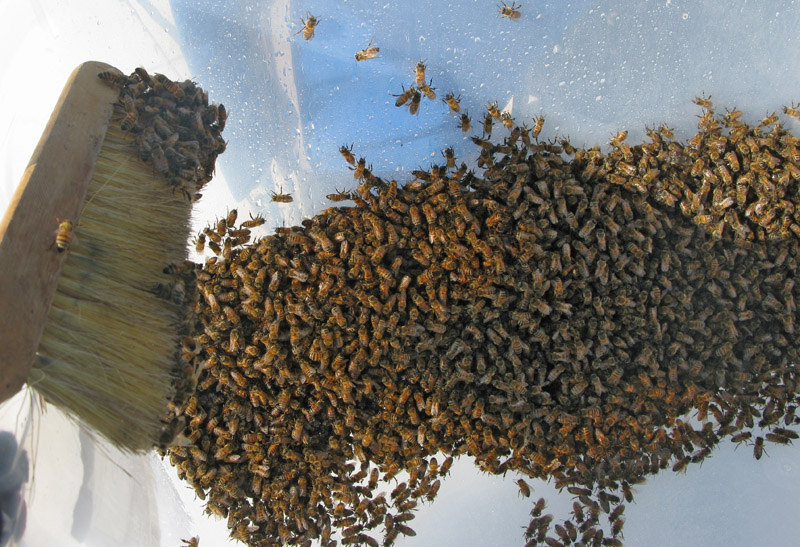
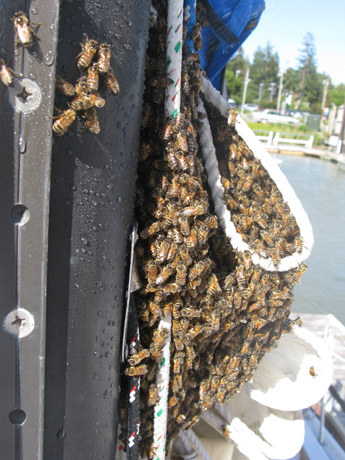
As Kraybill slowly unzipped the mainsail cover, Morrison realized that this job was going to be tricky. "I’m so lucky to have had a sailor to help me," she laughed. "I have no idea what I would have done because thousands of bees were glommed into each fold of the sail." Kraybill slowly raised the main as Morrison continued to sweep up the bees. There were so many, in fact, that they had to find another lidded container to collect them all. In the end, Morrison, who practices her hobby in Benicia, believes that the queen, who is only a little bigger than all the other bees and very difficult to spot, was among the 10,000 or so bees she collected. How does she know? "Because all the bees are still here," she said.
Morrison says the spring and early summer is when a new queen will go on a "mating flight." Her subjects follow her on the flight and wherever she decides to call home, they surround her for protection and start building the combs into which she’ll lay her eggs. But why on earth did she choose such a seemingly unlikely spot as a boat’s mainsail cover? "Bees are attracted to the color blue — think lavender, asters, etc." Morrison said. "I think she saw the color blue and found the safest little place in the folds of the sail."
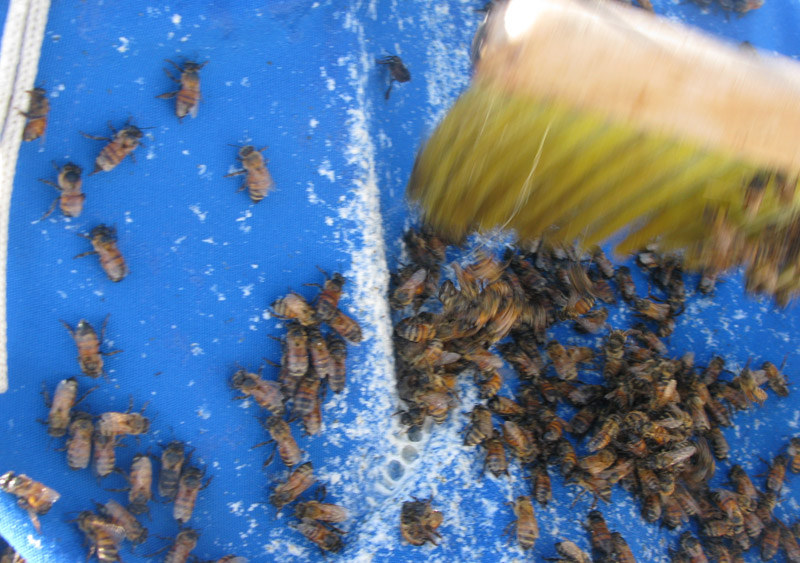
If you find your boat’s main covered in bees in the spring or summer, you’re most likely looking at the honey variety, as opposed to the Africanized ‘killer’ variety. Morrison suggests calling your local animal control office to see if they know of an apiarist that will come collect them. Not only has the honey bee population been declining worldwide, but those bees will be none too happy to leave their queen unprotected. "Even though they were very unaggressive at this point and we were in protective gear," Morrison pointed out, "my sister and I each got stung."
